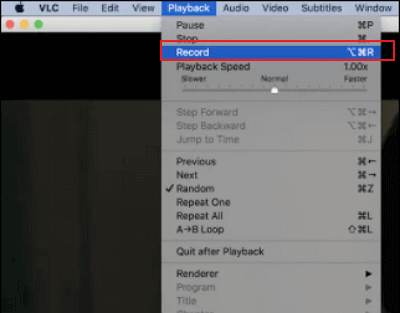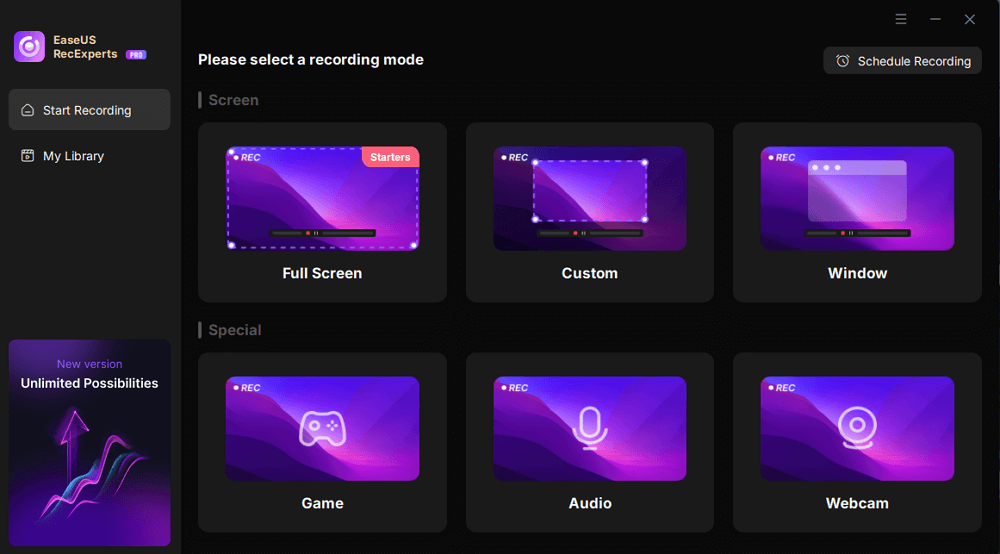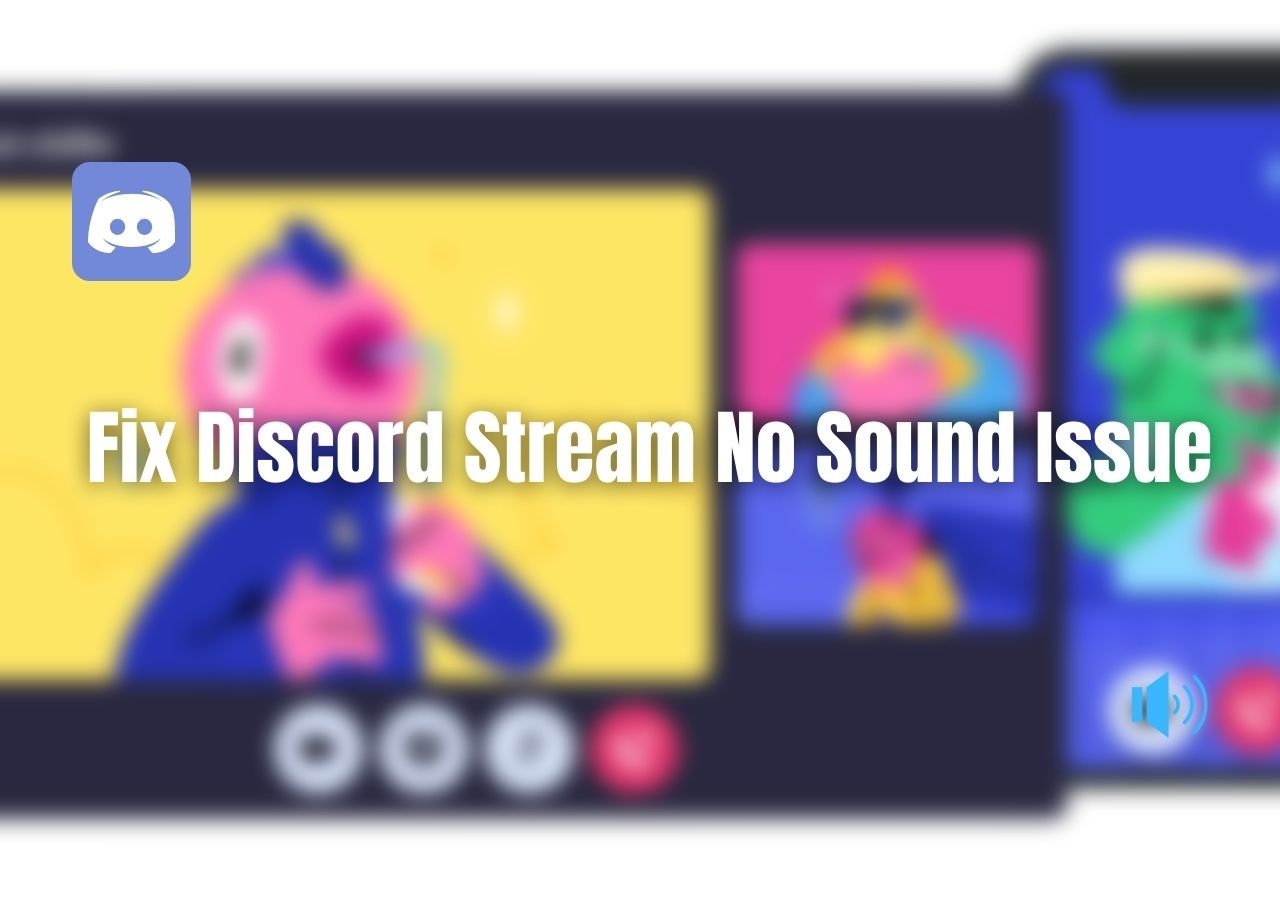-
![]()
Daisy
Daisy is the Senior editor of the writing team for EaseUS. She has been working in EaseUS for over ten years, starting from a technical writer to a team leader of the content group. As a professional author for over 10 years, she writes a lot to help people overcome their tech troubles.…Read full bio -
Jane is an experienced editor for EaseUS focused on tech blog writing. Familiar with all kinds of video editing and screen recording software on the market, she specializes in composing posts about recording and editing videos. All the topics she chooses …Read full bio
-
![]()
Alin
Alin is an experienced technical blog writing editor. She knows the information about screen recording software on the market, and is also familiar with data cloning and data backup software. She is expert in writing posts about these products, aiming at providing users with effective solutions.…Read full bio -
Jean is recognized as one of the most professional writers in EaseUS. She has kept improving her writing skills over the past 10 years and helped millions of her readers solve their tech problems on PC, Mac, and iOS devices.…Read full bio
-
![]()
Jerry
Jerry is a fan of science and technology, aiming to make readers' tech life easy and enjoyable. He loves exploring new technologies and writing technical how-to tips. All the topics he chooses aim to offer users more instructive information.…Read full bio -
![]()
Rel
Rel has always maintained a strong curiosity about the computer field and is committed to the research of the most efficient and practical computer problem solutions.…Read full bio -
![]()
Gemma
Gemma is member of EaseUS team and has been committed to creating valuable content in fields about file recovery, partition management, and data backup etc. for many years. She loves to help users solve various types of computer related issues.…Read full bio -
![]()
Shelly
"I hope my articles can help solve your technical problems. If you are interested in other articles, you can check the articles at the bottom of this page. Similarly, you can also check my Twitter to get additional help."…Read full bio
Page Table of Contents
0 Views |
0 min read
VLC Media Player isn't just a video player, and it also lets you record your screen with simple built-in tools. You can capture desktop actions, tutorials, or online videos without extra software. People choose VLC because it's free, open-source, and works on both Windows and Mac. It's lightweight and easy to use. But VLC has limits. It doesn't record system audio by default, and the setup can be tricky. Users often face no sound, black screens, or recording issues.
This guide will show you how to record your screen on Windows and Mac, how to capture system audio, and how to fix common problems.
Can VLC Record Screen?
Yes. VLC can record your screen, but it's not a full-featured screen recorder. It offers a simple way to capture your desktop, which is useful for quick tasks or basic tutorials. However, VLC lacks advanced options like system audio recording, editing tools, or high-quality output settings. It works best for basic screen capture when you don't want to install other software.
In the next sections, we'll show you how to record your screen on Windows and Mac, step by step.
How to Use VLC to Record Screen Windows PC
The steps to record with VLC Player on Windows computers are straightforward. All you need to do is adjust the settings correctly. This multimedia player offers you many useful features to record a video. For example, you can customize the frame rate of your recordings, and it would be better to set the frame rate as 10-15 fps, as long as you don't need to capture fast-moving objects on the screen. In addition, VLC Player allows you to select a suitable video format before recording so that you don't have to spend time converting the recordings.
Next, this part will talk about how VLC records the screen on your computer.
Method of Recording with VLC on Windows PC:
1Step 1. First of all, you need to launch the VLC Media Player. There are some options in the top toolbar. Click on"Media" and select "Convert/Save..." from its dropdown menu.

2Step 2. Then, a new window will pop up. Navigate to the "Capture Device" tab, set the capture mode as "Desktop", and choose a suitable frame rate. Then, click on "Convert/Save" > "Convert" to move to a new window.

3Step 3. You need to continue to complete the settings for the VLC screen capture. Select the output video format in the "Profile" section, and you can select MP4 from the drop-down menu. Then, click on the "Browse" button after "Destination file" to decide the save path.

4Step 4. Finally, hit the "Start" button to record the desktop with VLC Player.
✅✅There are things you need to pay attention to:
- Make sure the VLC window is minimized during the recording process. Otherwise, it will be captured in the output videos.
- VLC only allows you to record the full screen. If you only need the recording of part of your screen, video cropper software is necessary.
- VLC doesn't support capturing screen and audio at the same time.
How to Record with VLC Media Player on Mac
As mentioned above, VLC Media Player is a cross-platform multimedia player. That means this software is also compatible with macOS, and you can screen capture with VLC on your Mac, like doing that on a Windows PC. While the VLC Player works similarly on those two systems, some differences exist between the user interfaces.
If you feel confused about how to record screen with VLC on a Mac, the following tutorial may be helpful.
Method of VLC Recording Screen on Mac:
1Step 1. Launch VLC Player on your Mac. Navigate to the "File" option at the top of the screen and select "Open Capture Device..." to set the video source.

2Step 2. When a new window pops up, click on the "Capture" tab and select "Screen" as the video source.

3Step 3. Hit the "Settings" button on the same window and customize the frame rate. Like on Windows PC, 10-15 fps is suitable for your recordings unless something moves too fast on the screen.
4Step 4. Click "Open" and minimize the VLC recording window. Then, hit the "Playback" button on the top toolbar and click on "Record" to capture your screen.

How to Record System Audio with VLC
By default, VLC cannot directly record system audio while capturing your screen. To capture both screen video and system sound, you need to use additional virtual audio devices, but the setup differs between Windows and Mac.
Setup for Windows users:
- Download and install VB-Audio Virtual Cable.
- Set the virtual cable as your default playback device in Windows sound settings.
- Select this cable in VLC’s audio device menu to capture system audio during recording.
Setup for Mac users:
- Install BlackHole or Soundflower and grant necessary permissions.
- Use the Audio MIDI Setup app to create a multi-output device that includes your speakers and the virtual device.
- Set this multi-output device as your system audio output.
- Select the virtual device in VLC as your audio input source.
Here's how to use VLC to record audio on Windows and Mac:
Step 1. Open VLC and click "Media" > "Open Capture Device…".
Step 2. In the "Capture Device" tab, set Capture mode to "Desktop" for screen recording.
Step 3. Below that, find the "Audio device name" dropdown menu.
Step 4. Select the virtual audio device you installed (VB-Audio Virtual Cable on Windows, BlackHole/Soundflower on Mac) as the audio input source.
After completing these settings, start recording in VLC. It’s recommended to test the audio capture first, since virtual audio routing may need adjustments.
VLC Recording Troubleshooting: No Audio, Black Screen & More
1. No Audio in Recorded Video
Cause: VLC does not capture system audio by default.
Fix: Make sure you have set up and selected a virtual audio device (like VB-Audio Virtual Cable on Windows or BlackHole on Mac) in VLC’s audio capture device settings. Also, verify that your system sound is routed correctly to the virtual device.
2. VLC Records Black Screen
Cause: VLC may fail to capture the desktop properly due to graphics driver issues or hardware acceleration conflicts.
To solve the problem:
- Update your graphics drivers to the latest version.
- Disable hardware acceleration in VLC preferences (Tools > Preferences > Input/Codecs > uncheck “Use hardware-accelerated decoding”).
- Try running VLC as Administrator (Windows) or with proper permissions (Mac).
3. Video is Lagging or Choppy
Cause: High CPU usage or insufficient frame rate settings.
Fixes to solve the problem:
- Lower the frame rate in capture settings to around 15-30 fps for smoother performance.
- Close unnecessary background programs to free up system resources.
- Reduce screen resolution or record a smaller screen area if possible (though VLC only supports full screen, you can crop afterward).
Tips to Get Better Screen Recording Results with VLC
Set your frame rate between 15 and 30 fps. Lower frame rates reduce file size and CPU usage but may result in less smooth video. Higher frame rates offer smoother playback but require more system resources and produce larger files.
Choose MP4 format with the H.264 codec for optimal compatibility and efficient compression without sacrificing quality.
Performance Optimization Tips:
- Close unnecessary programs during recording to free up CPU and memory resources.
- Minimize the VLC window while recording to prevent it from appearing in your video and to reduce processing load.
- Lower your screen resolution if you experience lag, as recording at very high resolutions can be demanding on your system.
- Since VLC only supports full-screen recording, if you need to capture a specific area, record full screen first and crop the video afterward.
Spread out this guide with others in need!
[Recommend] How to Use the Alternative of VLC Screen Recorder
This post offers two methods of VLC recording screens on different systems, and both are effective. However, as a media player, VLC cannot totally replace some specialized screen recorders. For instance, it's tough to capture only part of the screen with this software, and the size of the output files is usually too huge, so you have to find a file compressing tool to reduce it. Moreover, VLC doesn't support recording screen and audio simultaneously, and this problem bothers many people. You can only record the screen and audio separately and sync them after recording.
Luckily, there are plenty of powerful screen recorders on Windows and Mac that can solve every problem you may have in using VLC Media Player. EaseUS RecExperts is one of the notable and reliable screen recorders you can choose. This software allows you to select the recording region to capture the screen or take screenshots effortlessly. It also supports recording the screen with audio and webcam. Thus you will be able to make many kinds of videos by yourself.
One of the most important features that distinguish EaseUS RecExperts from other recorders is the easy-to-use built-in video editing tools. There is a trimmer for you when it's necessary to remove some parts from the captured video and audio files.
Key Features:
- Record part of screen or capture the whole screen
- Support recording both system sound and your own voice
- Start and end recording automatically using a task scheduler
- Export recordings in more than 10 video/audio/image formats
This all-in-one screen recorder is also compatible with Mac. Don't miss this program if you want to capture something on your computer. Click on the button to download it for free.
Steps to Use the Alternative of VLC Screen Recorder:
Step 1. Launch EaseUS RecExperts. You'll see six recording modes available. Choose Full Screen to capture everything on your display, Custom to record a selected area, Window to record a specific app window, Game for optimized gameplay recording, Audio to capture system or microphone sound only, and Webcam to record your webcam feed.

Step 2. Select your input sources. You can freely enable or disable the Webcam, Speaker, or Microphone depending on your needs. If you only want to record a silent screen, simply turn all of them off.

Step 3. Click the red REC button to start recording. A floating control bar will appear on your screen. To pause the recording, click the Pause button (white); to stop it, click the Stop button (red).
Step 4. After recording, you'll be taken to the preview window, where you can watch, trim, or edit your recording with ease.

Conclusion
More than merely a multimedia player, it's also possible to record screen with VLC. However, the disadvantages of recording screens with this software are bothering many people. To get high-quality videos by capturing the screen on Windows and Mac, you need a great screen recorder like EaseUS RecExperts.
This software allows users to record anything on a computer screen, and its intuitive interface is suitable for everyone, especially for novices. Download and install it to make your own videos now.
Record Screen with VLC FAQs
1. Can you record screen and audio with VLC?
No. VLC does not support capturing screen and audio at the same time. So, if you want to record screen and audio simultaneously, you need to find some VLC alternatives, such as EaseUS RecExperts, OBS Studio, Fraps, etc.
2. Can VLC record from webcam?
Yes, VLC can capture video from your webcam. You can select your webcam as the capture device in VLC's Open Capture Device settings and start recording directly. However, VLC's webcam recording features are basic compared to dedicated webcam software.
3. Can you record a stream with VLC?
Yes, VLC allows you to record network streams such as live broadcasts or online videos. By opening a network stream URL in VLC, you can play and record the stream simultaneously using the Convert/Save function.
3. Why is VLC not recording?
Below are some common reasons:
- 1. System bugs
- 2. Wrong settings
- 3. The current version does not support screen recording
EaseUS RecExperts

One-click to capture anything on screen!
No Time Limit, No watermark
Start Recording



